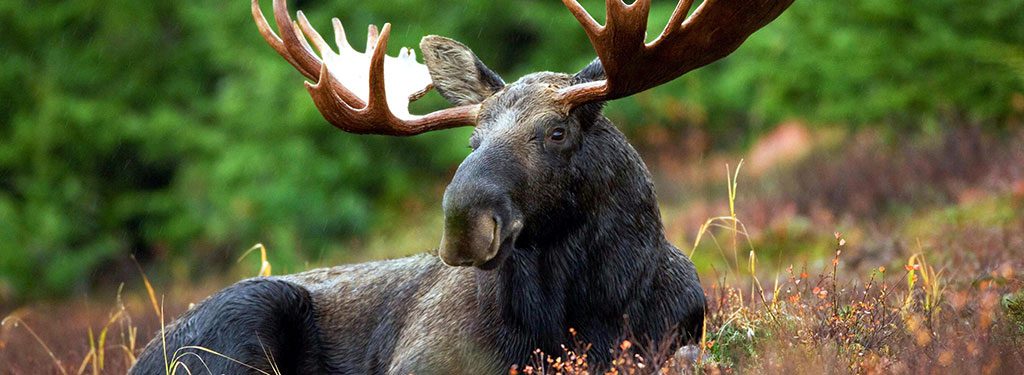In Northern Ontario’s forests and rural highways, where animals are common, wildlife collisions happen often. This area has lots of deer, moose, and other animals that drivers may see, especially at dawn and dusk when they are most active.
These crashes can have a wide range of outcomes, from little auto damage and brief inconvenience to serious collisions that result in considerable damage and even injuries. But can the damage caused by an animal collision—like one with a bear or moose—be covered by your auto insurance policy?
Understanding the nature of wildlife collisions and their potential impact on your insurance is crucial for Northern Ontario residents, and we are here to help you navigate this complex issue.
How Auto Insurance Can Protect You:
Selecting the right auto insurance protection is crucial for collisions with wildlife. Comprehensive car insurance is typically the policy that provides protection against damage caused by collisions with animals. This is different from basic liability insurance, which only covers damage to other vehicles and property.
- Comprehensive Coverage: This coverage protects you against various risks, such as theft, vandalism, fire, and other specified perils. If you hit a deer, moose, or any other animal, comprehensive insurance will cover the cost of repairs to your vehicle.
- Deductibles and Limits: Knowing your policy’s deductibles and limits is important. A deductible is the amount you pay out of pocket before your insurance coverage kicks in. Make sure you understand these terms and choose a deductible that fits your budget.
- Claims Process: In the event of a wildlife collision, remember that you are in control. Contact us to file a claim with your insurance company as soon as possible. Provide all necessary documentation, such as photos of the damage, a police report (if applicable), and any other relevant information to support your claim. Your proactive approach can make a significant difference in the outcome of your claim.
Tips to Stay Alert and Avoid Wildlife Collisions:
- Be Vigilant During High-Risk Times: Wildlife is most active during dawn and dusk. Be especially cautious when driving during these times, and always use your high beams when safe to do so to increase visibility.
- Slow Down in Wildlife-Prone Areas: Pay attention to wildlife crossing signs and reduce your speed in areas known for animal activity. Slower speeds give you more time to react if an animal suddenly appears on the road.
- Scan the Road and Shoulders: Continuously scan the road ahead and the shoulders for any signs of movement. Animals often travel in groups, so if you see one, be prepared for others to follow.
- Be Careful When Using Your Horn: If you see an animal on or near the road, be careful when using your horn, as it could startle the animal and prompt it to flee into traffic or charge your vehicle.
- Always Wear a Seat Belt: Wearing a seat belt is crucial for your safety in the event of a collision, as it can significantly reduce the risk of injury. A collision with an animal can have a similar impact to hitting another vehicle, so the same safety benefits apply.
- Be Mindful of Your Speed: Adhering to speed limits and adjusting your speed according to road conditions and visibility can give you more time to react to unexpected wildlife encounters.
- Remember, There Might Be More: If you encounter one animal crossing the road, reduce speed and stay vigilant, as others may be following behind. Animals tend to travel in groups, so don’t assume you’re in the clear after avoiding one.
What to Do If a Collision Occurs:
- Pull Over Safely: If you hit an animal, pull over to a safe location as soon as possible to assess the situation and turn on your hazard lights.
- Check for Injuries: Check yourself and any passengers for injuries. If anyone is hurt, call emergency services immediately.
- Report the Incident: Contact local authorities to report the collision, especially if the animal is large and poses a hazard to other drivers.
- Document the Scene: Take photos of the damage to your vehicle and the surrounding area. This documentation will be helpful when filing an insurance claim.
- Contact Us: Notify Northern Insurance Brokers about the collision and begin the claims process. Provide all necessary documentation and follow our instructions to ensure your claim is processed smoothly.
Wildlife collisions are an inherent risk for drivers in Northern Ontario. To stay safe and prepared, understand how comprehensive coverage can protect you. Stay alert and follow safety tips to reduce the chances of incidents happening. Always remember to drive cautiously in wildlife-prone areas and ensure you have the appropriate insurance protection to safeguard yourself and your vehicle.
At NIB, we do more than sell insurance – we are your partners in protection. The next time you wonder about protection, claims, or settlements, remember that your trusted broker is just a call away, ready to navigate the complexities of insurance alongside you. Contact us or call 705-949-6555 to get started!
